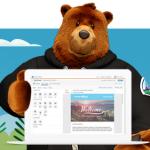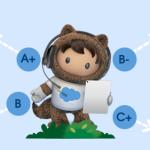In B2B sales, good communication is key to building relationships and increasing loyalty. Through your communication, you should be able to demonstrate your in-depth understanding of the client and their unique requirements. However, the emergence of multiple channels and rapid changes in the media landscape have made B2B communication more complex.
Email marketing remains an easy, cost-effective, and versatile means of communication that can help you build lasting relationships.
Through email marketing, you can:
- Effectively nurture leads
- Keep customers informed and engaged
- Resolve queries and issues
- Present your offerings as solutions to customers’ specific needs
What you say and how depends on the nature of your business, the stage of the sales funnel that your audiences are at, specific actions or events, etc. But there are a few dos and don’ts you can keep in mind to create attention-grabbing emails. Follow these best practices to create an effective email template for all kinds of B2B sales communications:
1. Write a compelling subject line: The first thing that will grab your reader’s eye is the subject line, so make it exciting yet credible. Use eye-opening statistics or statements that pique urgency or curiosity. But avoid spam words like great deals, win, guaranteed, etc. This will help your emails bypass spam filters and attract attention even in a crowded inbox.
2. Make the messaging about the customer: Create a personalised pitch that highlights the customer’s pain points and provides viable solutions. This will help the customer connect with your brand at a deeper level. Use a customer relationship management (CRM) tool to gather and access data on your customers – where they are on the customer journey map, their interests, their needs, etc. – in one place. With these insights, you can craft personalised messaging that shows customers how your solution or service will positively impact their business.
3. Keep it short: Try to keep the length of your emails within 200 words. This gives you adequate space to make a crisp, compelling case for your offerings without boring the reader with unnecessary information.
4. Adopt a conversational tone: Write as if you are talking to a peer or well-known acquaintance. Be formal if you need to, but maintain an empathetic and friendly tone to encourage more engagement with your emails.
5. Include proof of claims: Share customer testimonials or other snackable content that can build credibility and demonstrate your experience. Sharing helpful information adds value to your audiences beyond your offerings.
6. End with a clear CTA: Include a strong and straightforward call-to-action, so that your audiences know the next best steps to follow. Your aim should be to get the right response from them – whether it’s signing up for a product demo or creating an account. The CTA should never be pushy. Frame it based on how close the prospect is to buying. Rushing your prospects and customers is a common B2B sales mistake.
With the help of an intelligent marketing automation tool, you can simplify the process of creating well-performing email templates, making updates to and customising emails, while reducing the chances of error in the process.
Using Salesforce Marketing Cloud Account Engagement (formerly Pardot) to send the right message at the right time
Salesforce Marketing Cloud Account Engagement (formerly Pardot) is a one-stop B2B marketing automation tool that helps you unlock greater value with beautiful, personalised emails. With the help of Marketing Cloud Account Engagement, you can
- Create, edit and send personalised emails that can be formatted on any device
- Add attributes to various email sections to make them editable and reusable
- Use drag and drop options to design highly targeted emails quickly
- Add dynamic content, relevant resource links, and personalised product recommendations with a few clicks
- Choose from a variety of out-of-the-box email templates
Marketing Cloud Account Engagement HTML components can also be used to construct a variety of editing scenarios, including full WYSIWG, text-only, image-only and so on. To ensure that your emails show correctly across devices and browsers and are not blocked by spam filters, the solution also runs email rendering tests through Litmus.
It is not easy to get customers’ attention, but a foolproof strategy is to deploy emails that are visually appealing and have a compelling copy. With Marketing Cloud Account Engagement, businesses have a cost-effective, easy-to-use marketing automation technology that helps create and optimise emails for different buyer journeys.































